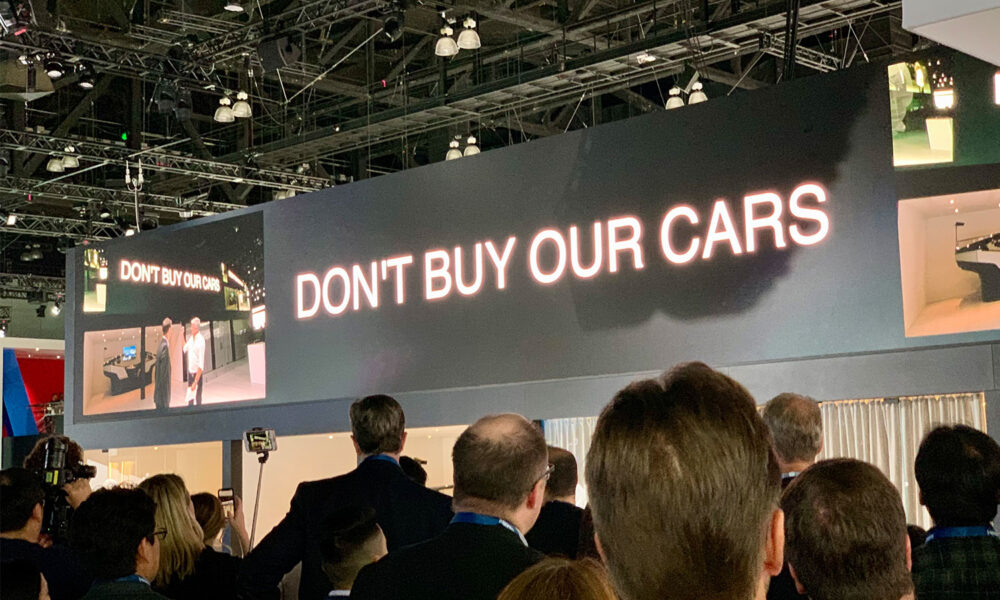The future of cars is electric. That’s not just what I think, it’s not just what is required to slow climate change, it’s what many of the world’s automakers have publicly stated. However, over the last month several automakers have said the transition from gasoline to electric vehicles (EVs) will need to slow down, in part citing demand.
It’s important to understand two facts driving this flurry of pessimistic press. First, while overall EV sales are up compared to last year, there are short-term sales dynamics negatively impacting some, but certainly not all, EV makers. Second, the Environmental Protection Agency (EPA) is in the process of setting regulations for future passenger vehicles—and casting doubt on EV sales is a tactic to push for weaker regulations.
Are EV sales actually slowing?
Data through the end of September 2023 shows that the EV fraction of US car sales is continuing to rise. EV sales in the US for the third quarter of 2023 exceeded 300,000 for the first time and EV sales in 2023 have increased nearly 50 percent compared to the same time last year. Overall, EV sales are now about 8% of new cars nationwide (a new high) and over 25% in California.
So why are automakers saying that EV sales are slowing? Part of the reason is likely due to the fluctuations in supply. Just a year ago, many EVs were in short supply and dealerships had waiting lists of buyers. Now, both production and the number of EV models available has spiked up, resulting in an oversupply for some models. That doesn’t mean there is waning interest, just that some automakers have overcompensated for supply constraints in past years. Put another way, overall EV demand (measured by sales) is still growing, but the supply of some EVs has caught up to consumer demand. In addition, not all EVs are equal. Just like there are gasoline models that underwhelm and sit on lots, some EVs are going to sell slower because they don’t stand out against tougher competition.
Charging networks and sales
Sales of the leading EV maker, Tesla, continue to grow with 2023 sales in the US of nearly a half million vehicles. In California, the Tesla Model Y is the top selling car or truck, with more than double the sales of any non-Tesla vehicle (gasoline or electric).
One reason behind Tesla’s sales lead is the marked difference in the Tesla charging network compared to other options for away-from-home charging outside of home. Most other automakers have relied on third-party charging networks and therefore don’t have direct control over the customer experience or reliability. Consumer surveys show a clear preference for the Tesla network.
Earlier this year, many EV makers announced plans to change their charging connector to the Tesla-developed North American Charging Standard (NACS) connector, opening up the highest rated fast-charging network to many more EV drivers. However, most of the automakers making the switch are offering adaptors next year and making the hardware change with model year 2025 vehicles. Long term, this is likely to make charging away from home easier for a lot of drivers. But right now, some potential buyers might be waiting to see new 2024 or 2025 models that have access to Tesla’s Supercharger network.
Sowing doubt about EVs to influence regulations?
Ordinarily, car companies might not be vocal about potential softening demand or oversupply of their products. So why are we hearing so much about it right now?
The answer might lie in the emissions standards proposed by the EPA for cars and trucks earlier this year. These standards are critical to reduce air pollution and to help curb climate change, and they are in part based on the demonstrated increasing availability of EVs. The automakers (through their trade group) are pushing hard to weaken these important standards, and now some of the companies seem to be using short-term market conditions to justify increased climate pollution for years to come.
Short-term noise versus long-term trends
The path for passenger cars and trucks is clear. Both in the US and globally, vehicles will be switching from gasoline to electricity. It’s a transition that needs to happen, and as quickly as possible to avoid the worst impacts of climate change.
While we know the clear direction the market is heading and see clear interest in EVs, there will be bumps along the way, from sources like the aftereffects of the pandemic, broader financial conditions, and global trade relations. It’s important to look beyond short-term ups and downs in EV sales and keep focus on the big picture: EVs are an important part of the solution to reduce air pollution and climate change.

